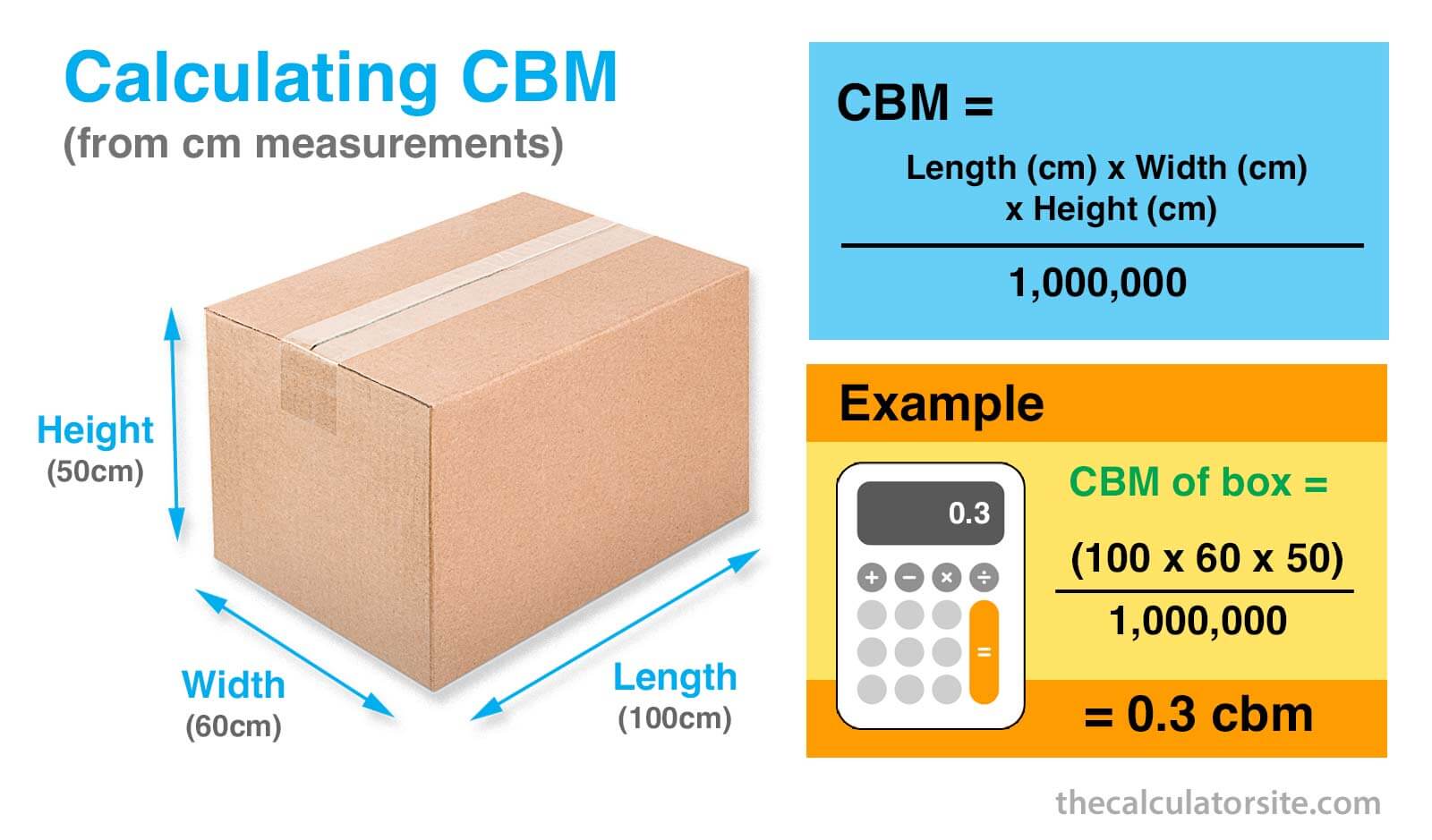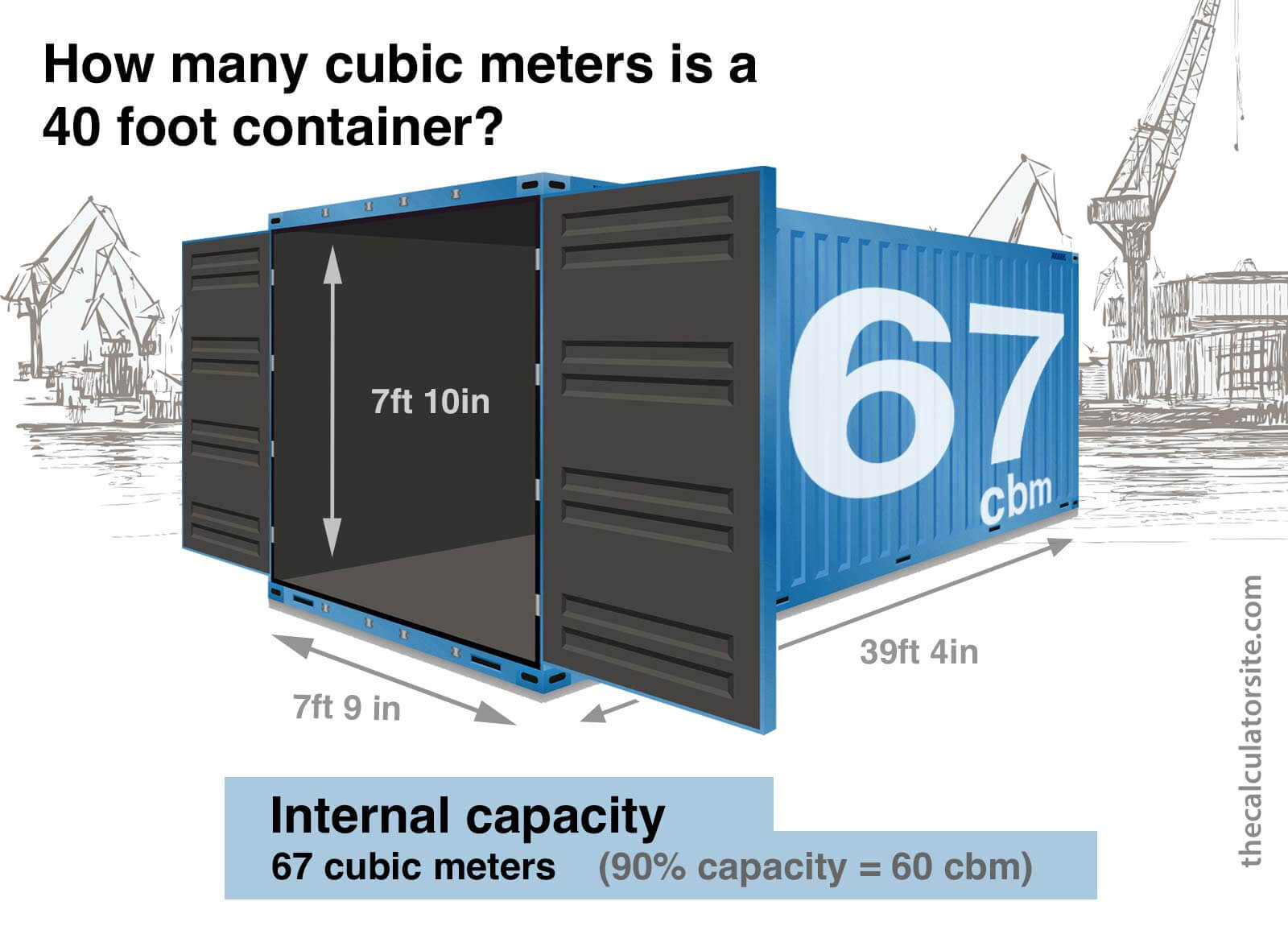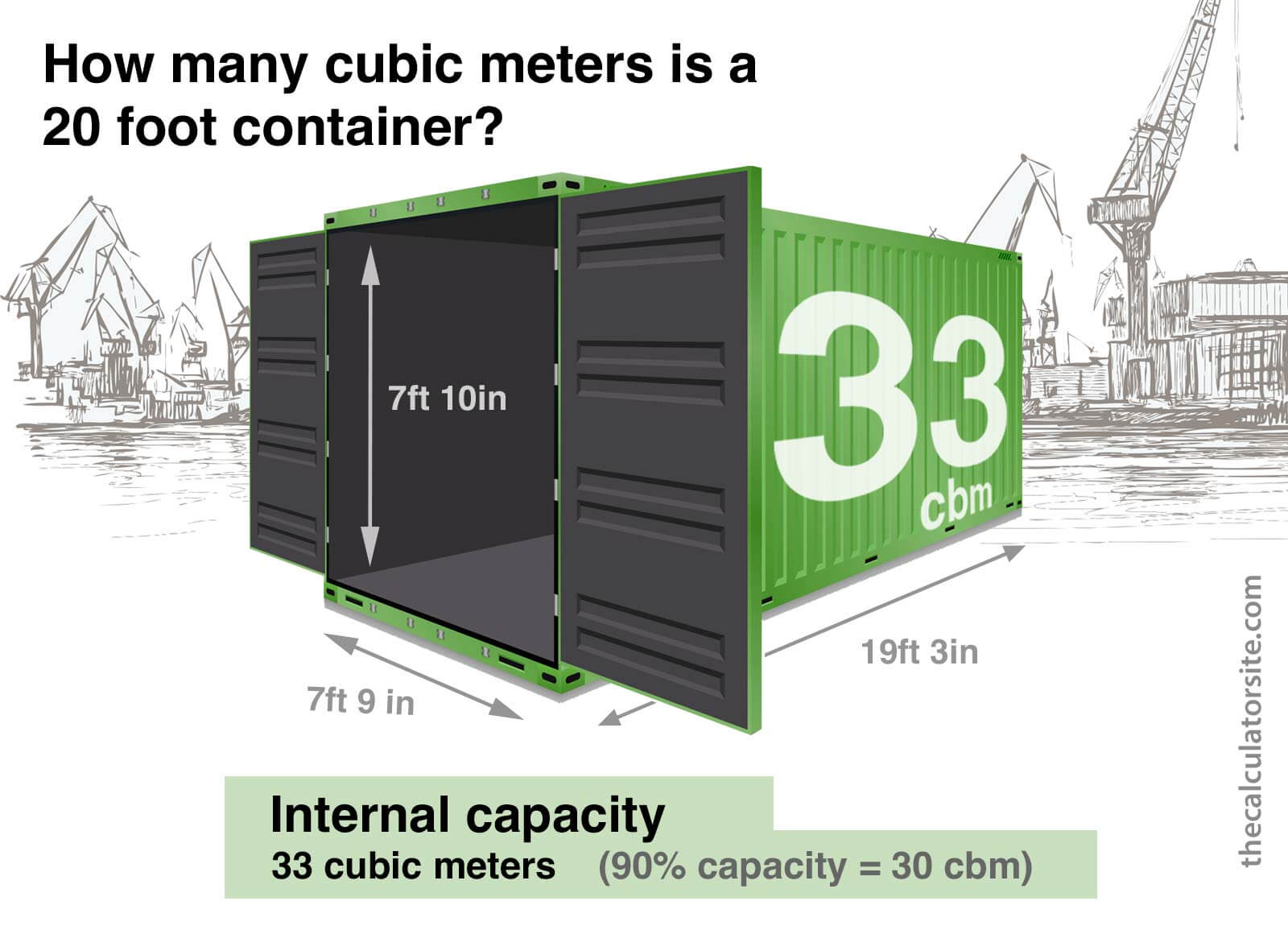CBM Calculator
Disclaimer: Whilst every effort has been made in building our calculator tools, we are not to be held liable for any damages or monetary losses arising out of or in connection with their use. Full disclaimer.
Whether you're shipping goods, managing storage space, planning a construction project, designing an interior layout, or ensuring import/export compliance, calculating cubic meters (CBM) can be an important part of your planning. Keep scrolling to learn how to calculate CBM manually and to find out the dimensions and CBM measurements for the most common sizes of shipping container and trailer.
How to calculate CBM
To calculate cubic meters (CBM), multiply the length, width, and height of an object or space (measured in meters) to obtain the total volume. CBM = length (m) × width (m) × height (m)
To ensure you calculate accurately, it's important that all of your measurements are in the same unit (in the above case, meters). We'll go through the formulae for calculating measurements in cm and feet below. But, for any conversions to and from meters, you can use our length converter.
Formulae for calculating cubic meters
- From meters: length (m) × width (m) × height (m)
- From cm: length (cm) × width (cm) × height (cm) ÷ 1000000
- From feet: length (ft) × width (ft) × height (ft) ÷ 35.3147

Let's go through an example calculation to demonstrate the process.
Example CBM calculation
We'll say you want to calculate the CBM volume of a box that measures 200cm x 200cm x 50cm. Your calculation would look something like this:
Step 1: 200 × 200 × 50 = 2,000,000 cm³
Step 2: 2000000 ÷ 1000000 = 2 m³
How to calculate volumetric weight
When you're shipping goods, it's not just the actual weight that matters. Couriers often charge based on the space a parcel takes up, especially if it's large but lightweight. This is known as volumetric weight (or dimensional weight).
To calculate volumetric weight in kilograms, multiply the length, width, and height of your package (in cm), then divide the result by a volumetric factor. The most commonly used divisor is 6,000, although some couriers such as DHL use 5,000 instead. 3
- Volumetric weight (kg) = (Length × Width × Height in cm) ÷ 6000
For example, if your parcel measures 100cm × 50cm × 40cm, the calculation would be:
100 × 50 × 40 = 200,000 ÷ 6000 = 33.33 kg (volumetric weight)
Once you've calculated the volumetric weight, compare it to the actual weight of your parcel. The courier will commonly charge based on whichever is greater. 4
Calculations for shipping containers
If you're preparing to pack a shipping container, truck, or warehouse, you might find yourself needing to calculate cubic meter measurements in order to estimate space requirements.
Shipping containers come in a range of sizes, but the ones you'll most commonly find in the shipping industry are standard 20ft, 40ft, and 40ft High Cube containers. 1
With this in mind, let's go through the common dimensions, including cbm capacity, for 20ft and 40ft containers.
How many cubic meters does a 40 foot container measure?
A standard 40-foot container has an internal cubic capacity of around 67 cubic meters (2,366 cubic feet). Typically, you can fit around 54-58 cubic meters of goods inside, depending on the size and shape of items. 2
Below are some dimensions of a standard 40ft container. Note that dimensions may vary slightly between companies.
| Dimension | Length | Width | Height | Capacity | Floor Space |
|---|---|---|---|---|---|
| External | 40 ft | 8 ft | 8 ft 6in | - | - |
| Internal | 39 ft 4in | 7ft 9in | 7ft 10in | 67 cbm (2,366 cf) | 303 sq ft |

If you want the internal measurements in meters instead of feet, you're looking at a length of 12m, width of 2.3m and height of 2.4m.
It's important to keep in mind that although a 40ft container offers a total space of 67 cubic meters, it is unlikely that you will be able to achieve 100% capacity due to the presence of items with awkward shapes.
International relocation experts MoveHub advise that you plan carefully and aim to pack your storage container to around 90% capacity (approx 60 CBM). They advise you to estimate a lower percentage and ensure you allocate extra room to avoid any potential shortage or lack of space. Doing this provides a safety net, guaranteeing that you have sufficient room to accommodate your belongings without encountering any unexpected constraints.
How many cubic meters does a 20 foot container measure?
A standard 20-foot container has an internal cubic capacity of around 33 cubic meters (1,165 cubic feet), Typically, you can fit around 25-28 cubic meters of goods inside, depending on the size and shape of items. 2
Below are the dimensions of a 20ft container. Again, note that dimensions may vary slightly between companies.
| Dimension | Length | Width | Height | Capacity | Floor Space |
|---|---|---|---|---|---|
| External | 20ft | 8ft | 8ft 6in | - | - |
| Internal | 19ft 4in | 7ft 9in | 7ft 10in | 33 cbm (1,165 cf) | 150 sq ft |

Just as we mentioned with the 40ft container, it's important to remember that although a 20ft container offers around 33 cubic meters (1,165 cubic feet) of space, it is unlikely that you will be able to utilize the full 100% capacity due to irregularly shaped items and the need for proper arrangement. By carefully planning your packing strategy, you can aim to fill the 20ft container to around 90% capacity (approx 30 CBM), ensuring efficient utilization of space while leaving some extra room for any space-consuming objects or unexpected needs.
Once again, the MoveHub website provides excellent advice and tips on loading a 20ft shipping container.
How many cubic meters will my trailer hold?
If you find yourself needing to transport a smaller load using a trailer, don't worry, we've got you covered. Here are some common trailer sizes and estimates of their cubic meter capacities. The capacities are based on a level height of load, so you'll need to adapt them if your load isn't level (a mound of sand or soil, for example).
| Trailer size | Height of items (level height) |
Cubic meters (approx) |
|---|---|---|
| 6ft x 4ft | 2ft | 1.4 cbm |
| 6ft x 4ft | 3ft | 2 cbm |
| 7ft x 4ft | 2ft | 1.6 cbm |
| 7ft x 4ft | 3ft | 2.4 cbm |
| 8ft x 5ft | 2ft | 2.3 cbm |
| 8ft x 5ft | 3ft | 3.4 cbm |
If you find yourself wondering how heavy your trailer load might be, I can point you to our weight to volume calculator tool, which contains a large list of materials.
I hope you found this calculator and article useful.
Calculator by Alastair HazellReferences
- A Shipper’s Guide to Cargo Container Sizes and Types, DHL.
- Which container’s right for me?, Shippo.
- Weight and dimensions, DHL.
- Dimensional weight vs. actual weight, Shippingchimp.
If you have any problems using our calculator tool, please contact us.
